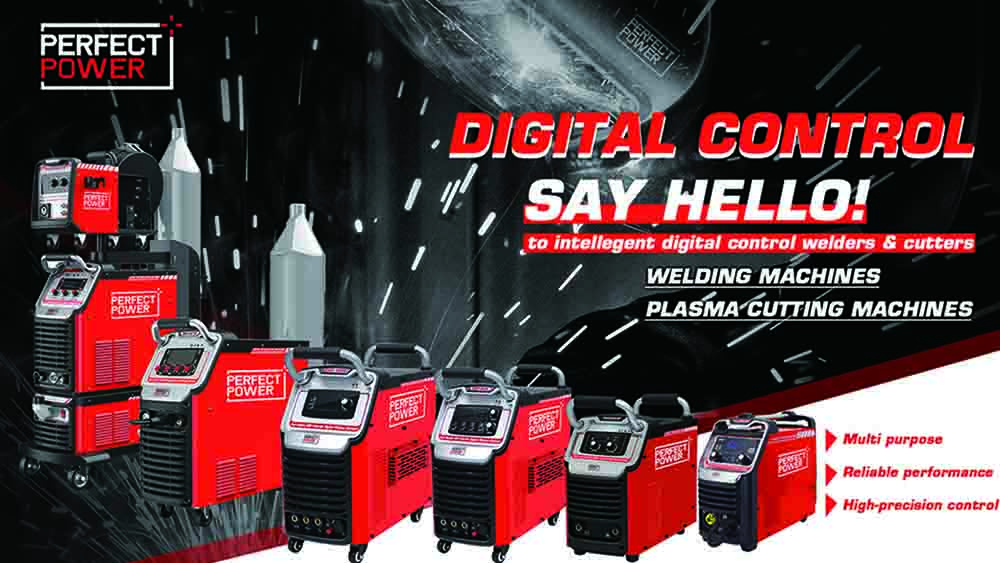
If you’re a new welder, you may be wondering what the difference is between stick welding and MIG welding, and which type of welding may be more useful or more versatile.
In this blog from Perfect Power Welder, we’ll discuss the basics of each method of welding along with some pros and cons, and make sure you know the differences between stick and MIG welding.

What is Stick Welding? Understanding the Basics
Stick welding, which is also sometimes called Shielded Metal Arc Welding (SMAW) is the oldest, simplest, and most cost-efficient type of welding, and it’s been used for more than a century, with the first patents being issued for the process in the late 1880s.
Stick welding is a very commonly-used welding method among beginners and hobbyist welders, because it’s quite simple to do, and it’s very versatile.
In this method of welding, a consumable “stick” or rod coated with flux (an “electrode”) is used to create the weld. Upon contact with the metal, the electrode begins to melt, as does the metal workpiece. The two metals melt together, forming a “weld pool” that will cool and form a sturdy, durable joint between the metals.
Stick welding does have some unique benefits. It’s very versatile and can be used to weld metal alloys including nickel, aluminum, copper, and ferrous metals like iron and steel. It also does not require the use of shielding gas and is easy to perform outdoors and in windy conditions. It can also create a relatively durable weld on a rusty or unclean surface – which can sometimes be advantageous in some situations.
However, stick welding is not nearly as “neat” as other welding methods. Because of the way the weld works, molten splatter is a common problem, so this needs to be taken into account in the welding workspace, and some sanding, cleaning, and finishing of the weld is usually required after work is complete – which can lead to a longer overall weld time and higher cost.
In addition, it’s not nearly as time-efficient as some other types of welding. Weld cleaning, swapping electrodes, and other steps mean you won’t spend much time actually laying weld with stick welding.
What is MIG (Metal Inert Gas) Welding? Understanding the Basics
MIG Welding is easy to learn but takes some practice to master the basic techniques. It’s often called the “hot glue gun” of welding because of how it works. MIG welders use a tool called a spool gun, which feeds a wire spool electrode through the unit. This is in contrast to stick welding, which uses a removable stick electrode.
This wire moves through the welder at a constant speed, and the gun also emits a stream of gas that protects the weld from nitrogen and oxygen. The electrode wire melts at a high temperature upon contact with the metal workpiece, forming a weld pool that will cool to connect them together.
This process has some distinct benefits. MIG welding creates high-strength welds and has a much more “clean” appearance with less need for sanding and cleaning, and it’s very time-efficient since the electrode and shielding gas are fed automatically through the welder. It can be used to weld materials as thin as 26-gauge and can be used on any metal surface.
However, it’s harder to use MIG equipment outdoors due to the shielding gas, which could blow away in high winds. Different types of metals and gases are needed for different metals, as well. MIG welding also should always be performed on a clean, rust-free surface, so it requires more initial preparation. It also may not be practical for very thick metals, like cast iron.
What’s Better? Stick Welding or MIG Welding?
There is no “best” option. The differences between stick and MIG welding mean that both have their places and purposes.
Stick welding is great for beginners because it’s easy to learn, and very affordable. The results may not look clean, but they will be strong, and if you don’t care about a neat bead or are willing to spend time cleaning and sanding the bead, stick welding is a good option.
In contrast, MIG welding is faster and more efficient, and cleaner than stick welding. However, MIG machines are more complicated to set up and learn, and are also usually more expensive. A MIG machine is a better choice for more advanced hobbyist welders who weld often, or for professional welders who may be looking for freelance work.
Whether you’re looking for stick welding or MIG welding supplies, Perfect Power Welder Supply is here for you. We have a wide variety of new and used welding equipment, gases and electrodes, and all the other supplies you need.



